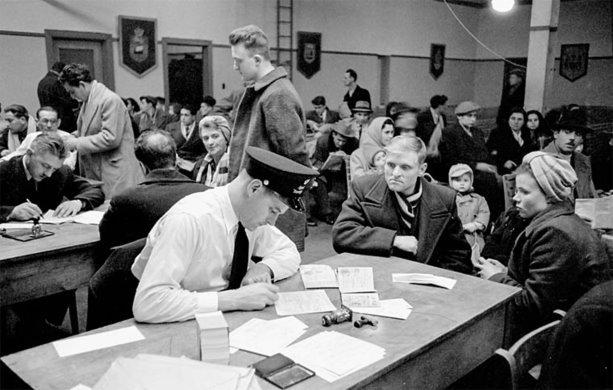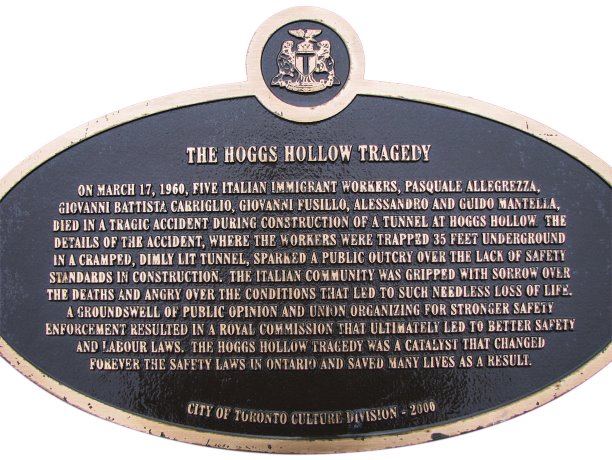Just after the turn of the 20th century, the T. Eaton Company decided to build its first department store outside Toronto, in Winnipeg.
Local boosters bragged the small but rapidly growing prairie city was on its way to becoming the Chicago of the North, and the imminent arrival of the Eaton store seemed to confirm their optimism. Before the store could be erected, the building site on Portage Avenue needed to be excavated.
The dark Red River dirt was shovelled out and loaded onto dozens of horse-drawn wagons. They took the debris to the outskirts of Winnipeg and dumped it. Then they turned around and trotted back to the building site and picked up another load.
One of these wagons was driven by Moishe Shatsky. Today he would be driving a truck and called an independent heavy equipment owner-operator. Back then he was simply a teamster — someone with a wagon and a team of horses.
Like many Winnipeggers in 1900, Shatsky was a recent arrival to the city and to Canada. He, his wife Henrietta and their half-dozen children had left Russia a few years earlier. They had read the writing on the wall and decided it would be wise to leave eastern Europe and the growing number of anti-Semitic pogroms. The Shatskys were just one family of the more than 17 million immigrants who have come to Canada since Confederation in 1867. All have stories to tell and this, briefly, is one of them.
The first leg of their journey took the family to the German port of Hamburg. Here Shatsky booked passage on a ship bound for Halifax. He also bought tickets for a train that would carry his family on to Montreal.
On the ship, Shatsky met a man who had train tickets from Halifax to Winnipeg. For reasons unknown, they switched tickets, and the Shatskys headed for the prairies instead of Quebec. The family moved into a one-storey, wood-frame house, with a stable for horses in the back, on Manitoba Avenue in the North End, where the city’s growing population of eastern European immigrants was settling.
Unlike in the rags to riches stories, the Shatskys were slow to prosper in their new country. It wasn’t until the third generation that one of its members was finally able to make it out of the working class. But they were grateful to be in Canada and to be alive. They knew that if they had stayed in Tsarist Russia they could have been slaughtered, like thousands of their co-religionists.
Foreign Supply and Domestic Demand
In Canadian Immigration Policy Since Confederation, York University political scientist Reg Whitaker writes that, during the Confederation debates of 1865, the encouragement of immigration was touted as one of the principal benefits of the union of the colonies in British North America.
In a speech to Confederation supporters, Upper Canada (later to become Ontario) politician George Brown said, "There is hardly a political or financial or social problem that does not find its best solution in a large influx of immigration. The larger our population, the greater will be our productions, the more valuable our exports, and the greater our ability to develop the resources of our country… double our population and we will be in a position to meet promptly and effectually any invader who may put his foot with hostile intent upon our soil."
Despite Brown’s optimism, the actual annual number of landed immigrants in Canada has fluctuated wildly over the years. Those fluctuations are the result of changing immigrant supply and demand. Some variations can be linked to immigration policy changes (demand), or Canada’s economic situation (demand), or world events that affect the movement of migrants and refugees (supply).
According to Statistics Canada, in the late 1800s the number of immigrants admitted annually varied from 6,300 to 133,000. Record numbers were admitted in the early 1900s when Canada was promoting the settlement of Western Canada. The highest number ever recorded until the present day was in 1913, when more than 400,000 immigrants arrived in the country. But during the First World War the number of people entering the country dropped dramatically.
Numbers picked up again in the 1920s, especially after 1924, when the U.S. legislated a quota on immigration based on national origins. But the number of landed immigrants dropped like a stone during the Depression and the Second World War. The return of peace in 1945 brought economic recovery and an immigration boom, which continued into the following decade. According to Statistics Canada, over the past 25 years the average number of landed immigrants is approximately 235,000 new immigrants per year.
Immigration and Canada’s Population
As impressive as these immigration numbers are, they don’t tell us who is actually living in Canada at a particular time.
Some immigrants are simply passing through the country on their way to settling in the United States.
Others travel back and forth between their country of origin and Canada. Some have died. And some have had children here.
According to Statistics Canada, the Census of Population measures the most direct impact of immigration on the country’s population at a specific point in time.
Beginning in 1871, the Census counted approximately half a million foreign-born people, or about one in six of everyone living in the country.
The foreign-born population continued to grow, but at a slower pace than those born in Canada.
Following the big bump in immigration in the early 1900s, the 1931 Census counted over two million foreign-born people, or just over one in five of the total population.
Since the 1950s, the foreign-born population has been steadily increasing. Today its percentage of the total population is estimated to be back to where it was just after the large influx from Europe in the 1920s.
Changing Immigration Sources
According to Canadian censuses over the last 150 years, there has been a major shift in the places of birth of Canada’s foreign-born population.
According to Statistics Canada, during the first few censuses after Confederation, the British Isles were the main source of immigration, accounting for more than four-fifths of the foreign-born population in the 1871 Census.
In the late 1800s, the number of immigrants born in continental Europe started to increase.
The trend was slow at first, but it soon picked up and stayed strong until it peaked in the last third of the 20th century.
The number of immigrants from Asia started to grow in the 1960s, when major amendments were made to Canada’s immigration legislation and regulations.
World events also led to the massive movement of refugees and migrants to Canada.
Examples include the arrival of 60,000 boat people from Vietnam, Cambodia and Laos in the late 1970s; 85,000 immigrants from the Caribbean and Bermuda in the 1980s; 225,000 immigrants from Hong Kong before the UK returned it to China in 1997; and 800,000 immigrants from China, India and the Philippines in the 2000s.
Government Immigration Control
Although the details of government immigration policy have swung this way and that over the past 150 years, it has always had political, social and economic goals, says Laura Ishiguro, professor of history at the University of BC.
"Immigration policy is part of the government’s project to shape the size and characteristics of the population," she said. "It is also often a response to the demand for labour in certain sectors of the economy, such as agriculture."
The responsibilities for immigration have become shared increasingly between the federal and provincial governments since the 1960s, says Penny Bryden, professor of history at the University of Victoria.
"Because it wanted immigrants who could speak French, Quebec has had its own immigration department since the 1960s and its own immigration policy since the 1970s," she said. "The other provinces work in co-ordination with the federal government, although they have more autonomy than they used to have."
Although the number of immigrants entering Canada has fluctuated and government immigration policies over time have changed, the fundamental back story to immigration to Canada hasn’t changed, Bryden says.
"Canada is a large, empty country," she said. "It needs to import people from the rest of the world because it doesn’t produce a large enough workforce to power the economy on its own."
In addition to benefiting Canada, immigrants benefit their home countries, too.
"The workers send hard currency home to their families, in the form of remittances," said Carmela Patrias, professor of history at Brock University.
Canadians pride themselves on being an inclusive and tolerant society and that is largely true, she says.
"But immigrants themselves have contributed a lot to making Canadian a more open and tolerant society," Patrias said. "They are especially sensitive to the harmful effects of discrimination."

1/2
New arrivals are processed at Pier 21 in Halifax, N.S. circa 1952. Pier 21 was an ocean liner and immigration shed from 1928 to 1972, welcoming over one million immigrants to Canada. The pier facility is often compared to the celebrated Ellis Island in the United States for its role in welcoming immigrants to North America.
Photo: Library and Archives Canada
2/2
Immigrant groups over the decades in Canada have helped fill the labour ranks



Recent Comments
comments for this post are closed